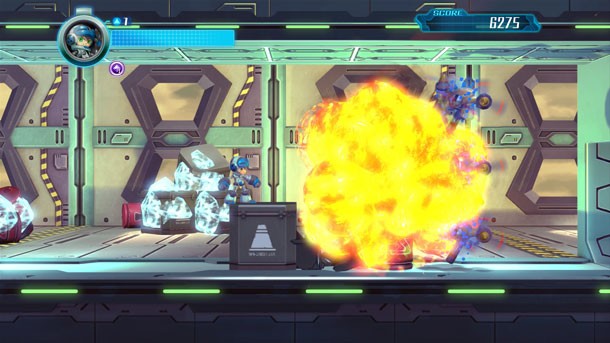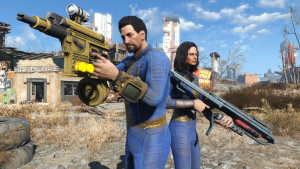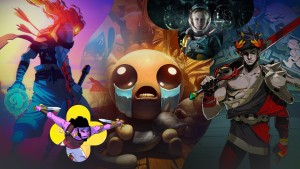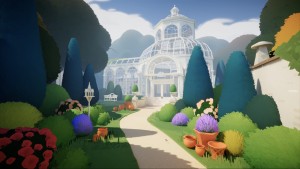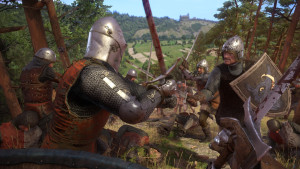Please support Game Informer. Print magazine subscriptions are less than $2 per issue
Keiji Inafune On Spreading Himself Thin And Capcom's Reaction To Mighty No. 9
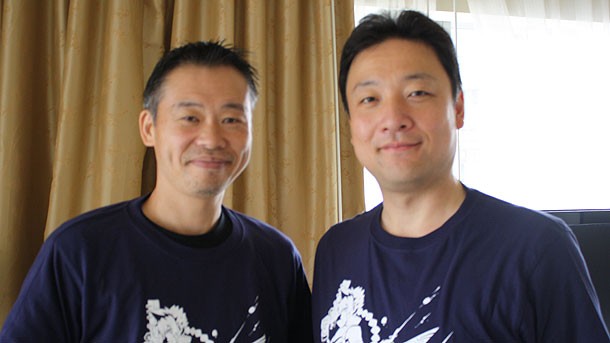
At PAX 2104, we had the chance to sit down with Keiji Infaune and Inti Creates President and CEO Takuya Aizu about the development of Mighty No. 9 and Azure Striker Gunvolt. Below you will find out if Inafune is stressed from working on a million different projects at once, how Infaune and Aizu's working relationship has changed (they worked closely when Inafune was still with Capcom on titles like the Mega Man Zero games), and whether Capcom has reached out to Inafune about the similarities between Mega Man and Mighty No. 9.
Game Informer: Are you’re stressed out? It seems like you always have at least 4 or 5 games you are working on. Is it too much? Do you feel comfortable working on so many projects at once?
Keiji Inafune: Actually, when I was the head of research and development at Capcom there were still tons and tons of projects that I was working on all at the same time. So really my work style, my style of production, has not really changed over the years. I’m used to running and leading multiple projects all at the same time and actually at Capcom there were a ton of meetings I would have to attend as well so I was very busy even then.
What are some of the major differences between working at Comcept and at Capcom?
Keiji Inafune: Well the biggest difference is at Capcom we had internal production teams. Right now at Comcept we don’t have really internal production teams. We have core members that help lead the concept for some games but still the actual brunt of the production work, making the models graphics, etc, a lot of that is done with outsource production companies, so that’s one key difference
Would you ever want to focus on a single project for an extended period of time?
Keiji Inafune: Running multiple projects all at the same time is actually really something that fits my core personality. I’ve lived my life going back and forth between foreign countries and Japan. Even now I go back and forth between Tokyo and Osaka West Japan all the time and just that style of moving around as well as when I’m working on projects thinking from one project to the next is actually very efficient, because what happens is fortunately the progression speed for projects usually isn’t on the same loop. Usually you have one prototype started and then another game that’s in full production, so there are different intervals of how busy you’re going to be on each project and each project is going to have periods where there are problems and periods where things are going really great. What it allows someone with my core personality to do, is that if one game has problems and I’m trying to figure out solutions on it but they’re not really coming to light right away I can focus on other projects that are moving along rather smoothly, and then later I can go back to that problem.
What happens to a lot of creators if they focus on a single game is they’ll sit there and focus and get so entrenched on just that problem over and over, then actually that focus on the single title makes the game get delayed and the production slow down more than what you’d think. You’d think one person focusing on one project would be the opposite but it’s not because you get fixated on that problem. So someone like me with my personality wants to work on multiple things to be as efficient as possible.
In many ways, Mighty No. 9 and even Azure Striker Gunvolt are the Mega Man games that Capcom isn’t making. Is Capcom is frustrated by that? Has there been any blowback? I’m sure you’re still friendly with some members of Capcom. Are there negative feelings there? Are they upset?
Keiji Inafune: Honestly, we have not heard anything from the people we know at Capcom about it, about any sort of frustration or stress. There are a ton of 2D sidescrolling games. There are actually a ton of sidescrolling games where you shoot, and there’s actually a ton of games that have robots in them, as well. I think those comparisons are drawn because it’s me that made those original games and now I’m making another game that’s in a similar genre, but you can’t tell a painter to change his painter style. He paints how he paints. For us, we’re just doing what we’re naturally good at, and if we felt it was something that obviously was dangerous from a patent or a copyright perspective then I don’t think we would’ve gotten to this level. I think there are probably some people in Capcom that want to do Mega Man games, and if that’s the case, I really hope they do them because it’s a great character. But that’s totally up to the publisher what sort of content they’re going to invest in, and what sort of content they’re not going to invest in.
Have you been enjoying the open development process of Kickstarter?
Keiji Inafune: We don’t necessarily think that just because you’ve raised money on Kickstarter means you have to make the production open. I think that there are some companies that do it and some companies that don’t. However, this is one of our platforms that we’ve based raising money off of. The production was giving more openness to the fans and to the backers, for sure, so we embraced this wholeheartedly from the start.
One of the things that people don’t realize is that it’s an unforeseen benefit of keeping your production open is that for Mighty No. 9, every month, we update the backers with some sort of new information – how the production’s going, some new piece of the puzzle, etc. What we found is that fans excitement and motivation ends up empowering our developers and creators.
Making a game with all the crunch time and long hours you’re working is a mentally exhausting thing, but when you get that user feedback on such a regular – actually, increased – interval, you get the feedback loop even faster. You get the excitement, the energy, even faster than you would on a closed production. We found that a lot of our creators are really happy to come into work, and they’re really excited to see what that user feedback is going to be. It’s strange, because whenever you’re showing a new milestone to a publisher, you’re always stressed out, and it’s never fun. But when you’re showing a new milestone to the public, to the fans, you’re always excited. You get demotivated showing new milestones to a publisher; you get motivated showing them to fans.
For more from Inafune and Aizu on Mighty N0. 9 and the recently released Azure Striker Gunvolt, head to page two.
Is there any fear of confusion between Mighty No. 9 and Azure Striker Gunvolt? They’re both 2d shooters with blue colored characters.
Takuya Aizu: So there are two different approaches that you can look at games on. One of course is the visual style and the other of course is how they actually play. It’s probably not something that’s necessarily important to mention but they play very differently, the two games do obviously. With Mighty No. 9 the absorption dash that you do in the game really puts you in a situation where you have constant risk reward scenarios against even just the normal enemies on the map. Whether you’re going to shoot damage and decide to either take your time and wait to zoom in to dash in, or do it right away to try and go in for the 100% absorption rate or not? That’s a totally different style than what you see in Gunvolt.
That being said, from a visual perspective – Inafune-san, if you look at his career and the sort of games that he’s been attached to, he understands a more global appeal and so the characters in Mighty No. 9, they feel as though they have been built and designed to resonate to a larger global audience, whereas the main character in Gunvolt the core concept was, “Let’s make a characters that will appeal to younger Japanese male gamers.” So, although their base colors may be the same, the two are actually going in different directions.
You two have been working together for years with the Mega Man Zero games, etc. Has your working relationship changed at all now that you’re not really affiliated with Capcom for these projects?
Keiji Inafune: Our personal relationship hasn’t really changed since Aiza-san was working at Capcom; how we’ve related to each other has always been the same. That being said, our working relationship, as far as company, it’s slightly different so much as when he was doing the Zero series it was Capcom as the publisher, and of course we were funding the development of the game, and Inti Creates as the developer that was making the game for us. So there was probably a bit more instruction given, a bit more, “Hey, you need to make sure the game is not delayed,” and, “Hey, you need to get this done faster.” That sort of relationship was established.
But now that we’re both independent companies, Comcept is still the publisher in this case and obviously Inti Creates is still the developer, but we’re more now on the same level. It’s a stronger collaborative effort. We still say things like, “We’ve got to make sure that the milestones get there on time,” but there’s a lot more of a sharing of the minds that’s going on, and I think that combination of working together on the same level is definitely paying off.
How did the 8-bit Mighty Gunvolt come about? What was the idea behind it? What was the goal with its release?
Takuya Aizu: So the core idea behind it was we were talking, the two of us, about how 8-bit games were cool, and it’d be nice to be able to take that taste, that flavor, and give it back to the fans. We said, “You know what. Why don’t we just do this?” That was kind of the core genesis of it. That’s one of the things you can do when you’re two independent companies and aren’t held to a higher power, per se.
The basic goal of it was first and foremost to be able to give back to the fans. Obviously if you buy Gunvolt within the first three months of its release, you get it for free, but then down the line if fans really like the concept, they think it’s a fun game as well, then the idea is to create DLC in this world –perhaps new characters, stages, whatever – and then make those paid content for people who really like the base concept.
Gunvolt went through design changes for North America. Are you happy to make those changes or do you feel like your vision is compromised when you change it for different audiences?
Keiji Inafune: A professional character designer will be used to changing pieces and parts on a character all the time, so it’s not necessarily whether they can or can’t, because they definitely can. It’s going to be about whether or not they agree to emotionally; whether they feel that it’s a design change that needs to happen. Most character designers feel pretty strongly about their design choices. One of the things that was an issue was that, in Japan, most character designs end up kind of androgynous in so much as they don’t fall into the typical stereotypes of what is male and what is female. But they felt that when it comes to Western content, male characters usually look a certain way, whereas female characters look a different way, and you get less of the androgynous type of characters that we see in Japan.
Gunvolt’s main character’s stomach area was open and they had a certain hairstyle that we felt would be confusing, perhaps too feminine for what the character was. But more so, we felt that by changing that, it would perhaps change the overall silhouette of the character, how the form of the character was. Ultimately, after we considered changing the hairstyle and covering up the stomach, we realized, “No, those changes would change the basic identity of what the silhouette was.” So we decided to change only a portion of it, which ended up covering up the stomach area. People think that that’s an easy change to make because they’re just like, “Oh, you just change color from beige to blue,” or whatever. That’s not the case, because these are pixels. You have to sit there and pixel in every single one of the animations throughout the entire game. It’s actually a huge hassle to change something as simple as that. We did have to think over our key design choices about what we were going to change, and what we didn’t change. Even a change as simple as that required a lot of back-and-forth, but fortunately, the artist was okay at the end. He was like, “Yep, okay, it makes sense to me. I’ll make the changes.”
